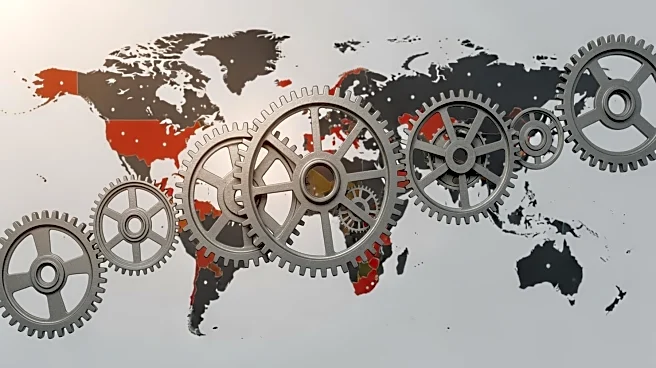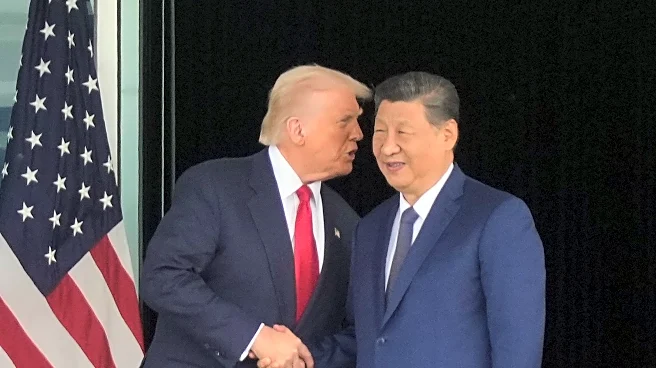What's Happening?
President Trump has imposed a 50 percent tariff on Indian goods, citing India's purchase of Russian oil and its reluctance to provide greater market access to American products. This tariff is the highest
in Asia and has significantly affected Indian exports, particularly in labor-intensive sectors such as textiles, leather, footwear, and gems and jewelry. As a result, Indian exports to the U.S. have decreased by nearly 12 percent in September compared to the previous year. In response, Indian exporters have urged Prime Minister Narendra Modi to provide relief measures, including a temporary pause on loan repayments and subsidized interest rates. The meeting with Modi included top officials, but no assurances were given, although the demands are reportedly being seriously considered.
Why It's Important?
The tariffs imposed by President Trump have significant implications for both the Indian economy and U.S.-India trade relations. The U.S. is India's largest export market, and the tariffs are making Indian goods less competitive compared to those from other countries like Vietnam and Bangladesh. Economists estimate that these tariffs could reduce India's annual growth by 0.6 to 0.8 percentage points. This situation highlights the broader impact of trade policies on international relations and economic stability. Indian exporters are facing increased pressure, and the potential for job losses and economic slowdown is a concern for the Indian government. The tariffs also reflect the ongoing trade tensions and the strategic use of tariffs as a tool in foreign policy.
What's Next?
The Indian government is under pressure to negotiate a trade deal with the U.S. to alleviate the impact of the tariffs. While some officials have indicated that a deal is close, others have expressed reluctance to finalize an agreement under pressure. The uncertainty surrounding the trade negotiations is causing anxiety among Indian exporters. Additionally, there are calls for the Reserve Bank of India to allow a weaker rupee to offset some of the losses, although this move is unlikely. The situation remains fluid, and the outcome of the trade negotiations will be crucial in determining the future of U.S.-India trade relations.













